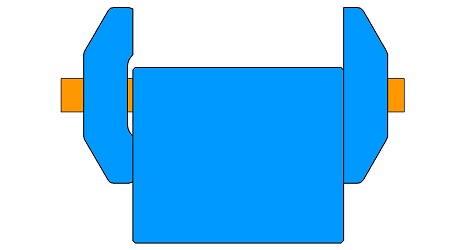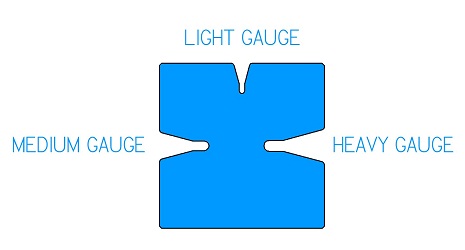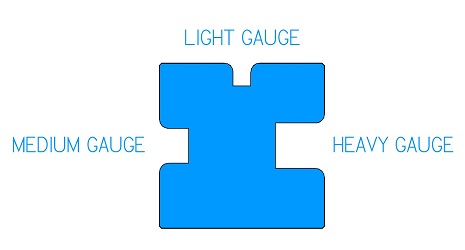3 Sided dies are rectangular (typically square) dies which have 3 v openings cut into 3 of the 4 sides of the die. These dies are connected directly to the die holder without a rail. The only way to really hold these using a rail type setting would be to create a rail which was basically a rectangular seat the same size as the die holder opening. Below is a general example of a 3 sided die holder.The reason for using a 3 sided die is to provide a bit a versatility in a single tool. By replacing your single or double v dies with 3 v dies you can significantly reduce tooling costs, storage room and set up times. Simply rotating the die gives you an entirely new v opening. Below is the basic shape of a die holder. In my opinion it is a bit more work to open up the die holder every time you want to change the die because proper usage means cleaning out the bottom of the holder before rotating the die. You’ll also want to ensure that the same torque is applied to each of the holding bolts along the length of the holder to ensure proper alignment down its length. It is however important to have the extra support on the sides of the dies on many 3 or 4 sided configurations.

Below you can see what is called a 3 sided hemming die because the 3 v openings will form acute angles for their respective gauges before flipping the die onto the 4th side and using it to flatten the bend. I’m not a huge advocate of this method because anything but the most careful use has the potential to cause scratching on the bottom of the die during the flattening process. This could lead to imperfections when bending with the small v opening. Granted I’m a bit overly protective of my tooling compared to most operators.

A common geometry for 3 sided dies is the 3 U die. This die has 3 rectangular cutouts with chamfered or filleted corners cut into the sides. Like the 3 v opening die the 3 u die is used to bend different gauges, or bend the same gauge with different radii. Typically u dies are used with 45 ° tooling to fully air bend the sheet metal.
 Finally it is not at all uncommon for tooling designers to be creative with their designs of 3 sided dies. Because most 3 sided tooling is custom made to order many sheet metal workers will take the extra time to incorporate different styles of bends to the different sides. These styles could correspond to the 3 or 4 bend profiles required by a standard set up, meaning that the operator need only switch the punch and rotate the die when moving from one set up to the next. These style could also just be the operator’s most common bends, eliminating the need for extra tooling. If you have an agreement with your tooling manufacturer to save on the costs of a particular 3 sided die this could save your shop a good deal of money in the long run. Below are some examples of 3 sided dies with special, custom applications. Be sure to take to your tooling manufacturer about the feasibility and economy of this type of die.
Finally it is not at all uncommon for tooling designers to be creative with their designs of 3 sided dies. Because most 3 sided tooling is custom made to order many sheet metal workers will take the extra time to incorporate different styles of bends to the different sides. These styles could correspond to the 3 or 4 bend profiles required by a standard set up, meaning that the operator need only switch the punch and rotate the die when moving from one set up to the next. These style could also just be the operator’s most common bends, eliminating the need for extra tooling. If you have an agreement with your tooling manufacturer to save on the costs of a particular 3 sided die this could save your shop a good deal of money in the long run. Below are some examples of 3 sided dies with special, custom applications. Be sure to take to your tooling manufacturer about the feasibility and economy of this type of die.
